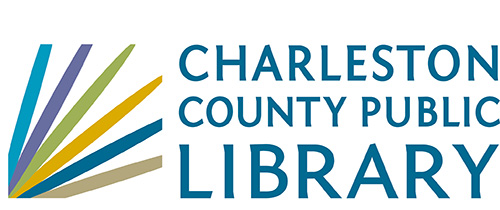Menu
×
Wando Mount Pleasant Library
11 a.m. - 6 p.m.
Phone: (843) 805-6888
Village Library
11 a.m. - 6 p.m.
Phone: (843) 884-9741
St. Paul's/Hollywood Library
11 a.m. - 6 p.m.
Phone: (843) 889-3300
Otranto Road Library
11 a.m. - 6 p.m.
Phone: (843) 572-4094
Mt. Pleasant Library
11 a.m. – 6 p.m.
Phone: (843) 849-6161
McClellanville Library
11 a.m. - 1 p.m.
Phone: (843) 887-3699
Keith Summey North Charleston Library
11 a.m. – 6 p.m.
Phone: (843) 744-2489
John's Island Library
11 a.m. - 6 p.m.
Phone: (843) 559-1945
Hurd/St. Andrews Library
11 a.m. - 6 p.m.
Phone: (843) 766-2546
Folly Beach Library
11 a.m. - 1 p.m.
Phone: (843) 588-2001
Miss Jane's Building (Edisto Library Temporary Location)
11 a.m. – 3 p.m.
Phone: (843) 869-2355
Dorchester Road Library
11 a.m. - 6 p.m.
Phone: (843) 552-6466
John L. Dart Library
11 a.m. - 6 p.m.
Phone: (843) 722-7550
Baxter-Patrick James Island
11 a.m. - 6 p.m.
Phone: (843) 795-6679
Main Library
11 a.m. - 6 p.m.
Phone: (843) 805-6930
Bees Ferry West Ashley Library
11 a.m. - 6 p.m.
Phone: (843) 805-6892
West Ashley Library
9 a.m. - 6 p.m.
Phone: (843) 766-6635
Edgar Allan Poe/Sullivan's Island Library
Closed for renovations
Phone: (843) 883-3914
Mobile Library
9 a.m. - 5 p.m.
Phone: (843) 805-6909
Today's Hours
Wando Mount Pleasant Library
11 a.m. - 6 p.m.
Phone: (843) 805-6888
Village Library
11 a.m. - 6 p.m.
Phone: (843) 884-9741
St. Paul's/Hollywood Library
11 a.m. - 6 p.m.
Phone: (843) 889-3300
Otranto Road Library
11 a.m. - 6 p.m.
Phone: (843) 572-4094
Mt. Pleasant Library
11 a.m. – 6 p.m.
Phone: (843) 849-6161
McClellanville Library
11 a.m. - 1 p.m.
Phone: (843) 887-3699
Keith Summey North Charleston Library
11 a.m. – 6 p.m.
Phone: (843) 744-2489
John's Island Library
11 a.m. - 6 p.m.
Phone: (843) 559-1945
Hurd/St. Andrews Library
11 a.m. - 6 p.m.
Phone: (843) 766-2546
Folly Beach Library
11 a.m. - 1 p.m.
Phone: (843) 588-2001
Miss Jane's Building (Edisto Library Temporary Location)
11 a.m. – 3 p.m.
Phone: (843) 869-2355
Dorchester Road Library
11 a.m. - 6 p.m.
Phone: (843) 552-6466
John L. Dart Library
11 a.m. - 6 p.m.
Phone: (843) 722-7550
Baxter-Patrick James Island
11 a.m. - 6 p.m.
Phone: (843) 795-6679
Main Library
11 a.m. - 6 p.m.
Phone: (843) 805-6930
Bees Ferry West Ashley Library
11 a.m. - 6 p.m.
Phone: (843) 805-6892
West Ashley Library
9 a.m. - 6 p.m.
Phone: (843) 766-6635
Edgar Allan Poe/Sullivan's Island Library
Closed for renovations
Phone: (843) 883-3914
Mobile Library
9 a.m. - 5 p.m.
Phone: (843) 805-6909
Patron Login
menu
Item request has been placed!
×
Item request cannot be made.
×
 Processing Request
Processing Request
[The highly gifted persons study by Adele Juda 1927-1955. Pinnacle and end of psychiatric genius research in Germany].
Item request has been placed!
×
Item request cannot be made.
×
 Processing Request
Processing Request
- Author(s): Wiedemann U;Wiedemann U; Burgmair W; Weber MM
- Source:
Sudhoffs Archiv [Sudhoffs Arch] 2007; Vol. 91 (1), pp. 20-37.- Publication Type:
Biography; English Abstract; Historical Article; Journal Article- Language:
German - Source:
- Additional Information
- Transliterated Title: Die Höchstbegabtenstudie von Adele Juda 1927-1955. Höhepunkt und Ende der psychiatrischen Genialenforschung in Deutschland.
- Source: Publisher: F. Steiner Country of Publication: Germany NLM ID: 0240376 Publication Model: Print Cited Medium: Print ISSN: 0039-4564 (Print) Linking ISSN: 00394564 NLM ISO Abbreviation: Sudhoffs Arch Subsets: MEDLINE
- Publication Information: Original Publication: Wiesbaden : F. Steiner, [1966-
- Subject Terms:
- Subject Terms: Juda A
- Abstract: Between 1927 and 1944 the psychiatrist Adele Juda (*1888-+1949) studied the biographies of more than 600 German-speaking "geniuses" and their families from a period between 1648 and 1920. The concept of this so-called "Höchstbegabtenstudie" (study on high-gifted persons) had been developed by the psychiatrist, human geneticist and racial hygienist Ernst Rüdin, director of the Deutsche Forschungsanstalt für Psychiatrie in Munich from 1917 to 1945. Juda's study was aimed at a re-examination of the "Genie-Irrsins-Hypothese" (genius-madness-theory) having been much discussed in medicine and anthropology since Cesare Lombroso, as it was hardly consistent with some of Rüdin's racial-hygienic concepts. While trying to make a selection of probands as objective as possible and to overcome a so far common purely casuistic approach, Juda's study also gave cause for criticism, for example as to the subjectivity of psychopathological assessment or the political and ideological conditions under which data were gathered. Nevertheless the "Höchstbegabtenstudie" has to be seen as the most extensive and as well as the last scientific piece of research concerning the "Genialenproblem" having been done in the 20th century, with the material gathered being an important cultural-historical source independent of its originally intended use. As one of the most important results Juda was able to prove a significant relation between mental illness and gift. For different reasons this result was not published until after Juda's death by Bruno Schulz, one of her former colleagues at the genealogical-demographic department, in 1953 and 1955. Last not least due to the fact that they came from Rüdin's former institute these publications were not taken much notice of.
- Publication Date: Date Created: 20070615 Date Completed: 20070827 Latest Revision: 20070613
- Publication Date: 20231215
- Accession Number: 17564157
- Transliterated Title:
Contact CCPL
Copyright 2022 Charleston County Public Library Powered By EBSCO Stacks 3.3.0 [350.3] | Staff Login


No Comments.